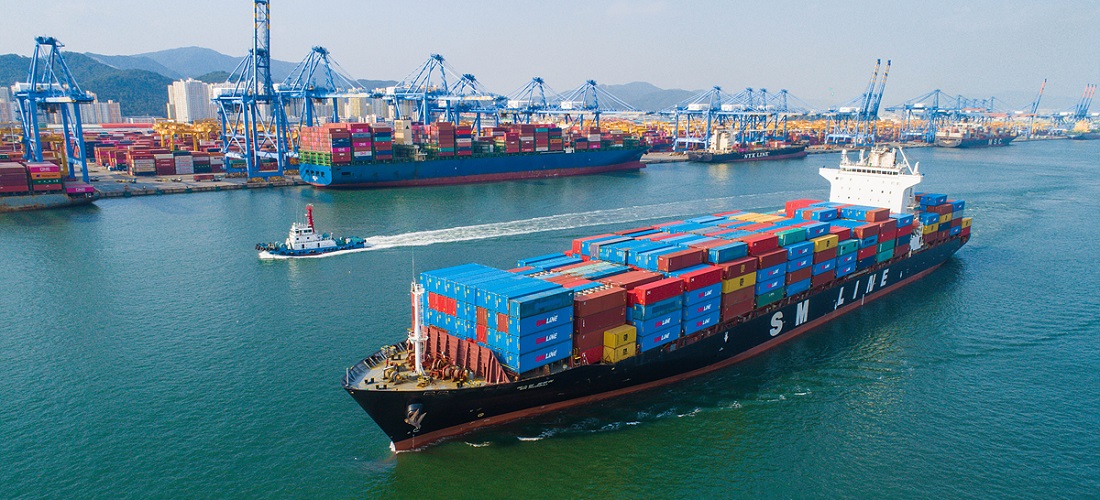
Brazil–US freight rates spike amid tight capacity, port congestion
Jun, 27, 2022 Posted by Gabriel MalheirosWeek 202226
Continued strength in US imports from South America is keeping pressure on northbound capacity and Brazil–US freight rates. Shippers are unlikely to see any respite until at least the fourth quarter, ocean carriers and freight forwarders tell JOC.com.
“On the Brazil–USA trade, we are not feeling any impact resulting from inflation in Brazil or slower economic growth in the US,” a spokesperson for ocean carrier Mediterranean Shipping Co. (MSC) told JOC.com. “Demand remains solid and northbound rates are steady and at healthy levels, whereas southbound is gaining some momentum compared to 2021.”
Spot container freight rates from Santos to New York reached $8,400 per FEU in June, up from $7,400 per FEU in February, according to Fabrizio De Paulis, managing director of -Brazil-based forwarder De Paulis Logistics & SCM Eireli. De Paulis noted that base rates from Qingdao, China, to Santos — roughly three times the sailing distance — were $5,794 per FEU.
“Carriers are pushing rate increases on shippers, and they are succeeding,” said Carlos Fuchs, commercial director of forwarder Royal Cargo. “It’s hard to book cargoes now for shipment in June. Space is only really available for July. Consequently, customers are willing to pay more to ship their goods.”
And for July loadings, those rates are even higher, averaging $10,000 per FEU, according to forwarders.
“Vessels from Brazil to the US, especially to the East Coast, are departing full, and it has been hard to get a booking for a vessel within two or three weeks of departure,” said Mauricio Fisch, director of Porto Alegre–based forwarder Ocean Express and part of the HTFN Global Logistics Network.
Congestion, skipped sailings
In addition to elevated cargo demand, persistent congestion at major US ports has forced carriers to blank sailings to maintain vessel schedules, effectively removing capacity from the north–south trade.
Hapag-Lloyd, for example, has been skipping fortnightly calls to Baltimore, Charleston, and Norfolk on its north–south South America East Coast (SEC) and Americas (USW) loops. The carrier said recently it would extend those blanks until at least the end of July due to the “complicated operational outlook” at US East Coast ports.
“Congestion is not allowing us to count on regular Brazil–US weekly freight services,” the MSC spokesperson told JOC.com. “Export volumes from some of our Latin American markets have been affected not only by port congestion in the US, but also in Panama, where we connect our feeders to and from our main US services.”
Lack of reliability and space may add even more pressure to north–south rates. “For the coming months, I foresee a lack of space, longer transit times due to congestion, and if demand slows, carriers will apply blank sailings,” Fuchs said.
And with most carriers deploying as much available capacity as possible to the booming trans-Pacific trade, there aren’t any additional ships to be diverted to the north–south trade. “MSC currently has deployed all its available ships to meet our customers’ demand for cargo capacity. The only ships not available are in the shipyard undergoing maintenance,” the spokesperson said.
Michael Britton, managing director of Maersk subsidiary line Sealand Americas, said the carrier is adding calls at less congested ports to mitigate the effects of the disruption on Brazil–US freight flows.
“We still experience bottlenecks in several ports and inland locations due to high cargo volumes and a shortage of workers in the supply chain,” Britton said. “In response, we have expanded our network to include port calls in Port Hueneme, California, and Mobile, Alabama, to provide reliable alternatives for customers. Capacity and container equipment inventory is higher than pre-pandemic levels.”
Despite the demand, total exports from Brazil fell 3.4 percent year over year in the first quarter due to equipment shortages and skipped sailings at the country’s main ports, while soaring inflation and overstocked inventories caused imports to drop 15 percent, according to Royal Cargo’s Fuchs.
“Inflation hit Brazil hard last year,” Fuchs told JOC.com. “Even though the national consumer price index has risen 12 percent over the last 12 months and price inflation on some goods is even higher at around 40 percent, we have gotten used to it.”
Still, Fuchs said volumes were increasing in the second quarter “and demand for the third quarter should be even stronger despite the economic situation in Brazil and the general elections…in October.”
Research firm Fitch Solutions in June forecast Brazil’s real gross domestic product would grow 1 percent in 2022, driven by increases in private consumption boosted by financial incentives and subsidies from the Bolsonaro government ahead of the election.
Source: Journal of Commerce
Tor read the full original article, please go to: https://www.joc.com/international-logistics/brazil%E2%80%93us-freight-rates-spike-amid-tight-capacity-port-congestion_20220627.html
-
Trade Regulations
Jul, 29, 2024
0
Brazil launches probe into dumping of imported glass from Malaysia, Pakistan and Türkiye
-
Meat
Nov, 03, 2022
0
Brazilian meatpackers lose 43K tonnes in shipments month-on-month
-
Steel and Aluminium
Nov, 07, 2023
0
Gerdau Steel President Urges Action as c Surge in Brazil
-
Oil and Gas
May, 31, 2023
0
Brazil development bank to support exports linked to Vaca Muerta pipeline



